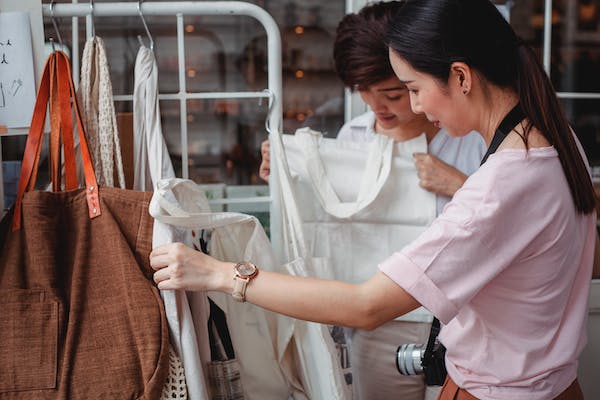Are you tired of feeling guilty about the clothes in your closet? Do you want to make a positive impact on the environment and support ethical practices in the fashion industry? Look no further than sustainable fashion. This rising trend is not only better for the planet, but it’s also stylish and affordable. In this blog post, we’ll explore everything you need to know about sustainable fashion, from its origins to how you can incorporate it into your wardrobe. Get ready to embrace a more conscious way of dressing!
What is Sustainable Fashion?
Sustainable fashion is an umbrella term for a number of different initiatives and practices aimed at making the fashion industry more environmentally friendly and socially responsible. The ultimate goal of sustainable fashion is to create a system in which clothing is produced without damaging or depleting natural resources, and without harming the people who make, wear, or dispose of it.
There are many different ways to approach sustainable fashion, and no one solution will work for everyone. Some common sustainable fashion practices include using recycled or upcycled materials, choosing natural fibers over synthetic ones, supporting fair trade and local production, and reducing waste throughout the supply chain.
The term “sustainable fashion” is still relatively new, and there is no one definitive way to achieve it. As the industry continues to grow and evolve, we can expect to see more innovative solutions to the challenges of making fashion more sustainable. In the meantime, there are plenty of small steps we can all take to make our own wardrobes more sustainable.
Benefits of Sustainable Fashion
As the world becomes increasingly aware of the need for sustainable living, sustainable fashion is also on the rise. Sustainable fashion is defined as clothing, shoes, and accessories that are produced in a way that is environmentally and socially responsible. This means that the materials used are sourced from renewable or recycled materials, the manufacturing process uses less water and energy, and workers are paid fair wages.
There are many benefits to sustainable fashion. For one, it reduces your carbon footprint. The production of clothing is a leading cause of greenhouse gas emissions, so choosing sustainable fashion helps to reduce your contribution to climate change. It also supports ethical working conditions for garment workers around the world. Many fast fashion brands rely on cheap labor in developing countries, which often leads to poor working conditions and low wages. By supporting sustainable fashion brands, you can help to improve the working conditions for garment workers globally. Sustainable fashion is often better quality than fast fashion because it is made to last longer and made with higher-quality materials.
So why not make the switch to sustainable fashion? It’s good for you, good for the planet, and good for the people who make your clothes.
How to Identify Sustainable Clothing
These days, it’s not enough for clothing to simply be fashionable—it also needs to be sustainable. But what exactly does that mean? Sustainable clothing is made from materials that have been grown or sourced in an environmentally friendly way, without damaging the ecosystem. It’s also made to last, so you can wear it for years instead of just a few seasons.
To help you shop sustainably, we’ve put together a quick guide on how to identify sustainable clothing. Here are some things to look for:
– Natural fibers: Sustainable clothing is usually made from natural fibers like cotton, linen, wool, and silk. These materials are biodegradable and don’t require harsh chemicals or a lot of energy to produce.
– Recycled materials: Another way to make sure your clothing is sustainable is to look for items that are made from recycled materials. This includes things like recycled polyester and recycled denim.
– Fair trade: When clothes are fair trade certified, it means the workers who made them were paid a fair wage and worked in safe conditions. Look for the Fair Trade Certified label when shopping for sustainable clothing.
– Local production: If you really want to reduce your carbon footprint, buy clothes that were produced locally. That way, they didn’t have to travel far to get to you, which cuts down on emissions.
Examples of Sustainable Brands and Labels
Some of the most popular sustainable brands and labels include Everlane, Reformation, and Stella McCartney. These brands are all leaders in the sustainable fashion industry and are known for their commitment to using environmentally-friendly materials and manufacturing processes.
Everlane is a sustainable clothing brand that was founded in 2010. The brand is committed to using high-quality materials that are sourced from ethical factories around the world. Everlane also offers a transparency guarantee, which means that customers can always see where their clothes are coming from and how they are made.
Reformation is another popular sustainable fashion brand. The brand was founded in 2009 with the goal of creating beautiful clothes that don’t hurt the planet. Reformation uses sustainable materials like TENCEL™ Modal and organic cotton, and all of their products are made in certified green factories.
Stella McCartney is a luxury fashion brand that has been a leader in sustainable fashion since its launch in 2001. The brand uses environmentally-friendly materials like recycled polyester and organic cotton, and all of their products are vegan. Stella McCartney is also committed to supporting fair trade practices throughout their supply chain.
How to Incorporate Sustainable Fashion into Your Wardrobe
Sustainable fashion is no longer a niche market or a trend that is on its way out. It is a growing industry with a loyal following among consumers who are interested in eco-friendly and ethically produced clothing. Here are some tips on how to incorporate sustainable fashion into your wardrobe:
1. Do your research. When you are shopping for clothing, take the time to research the brands and learn about their production practices. There are many resources available online, including blogs, websites, and even apps that can help you make informed choices about the clothing you buy.
2. Shop secondhand. One of the best ways to shop sustainably is to buy secondhand clothing. There are many places to find good quality secondhand clothing, including consignment stores, thrift stores, and online resale sites.
3. Buy less, but better quality. Another way to approach sustainable fashion is to buy fewer items of higher quality that will last longer. This might mean investing in a few key pieces from sustainable brands instead of buying a lot of cheap fast fashion items that will fall apart quickly.
4. Be mindful of your washing and care habits. The way you wash and care for your clothing can also have an impact on the environment. Washing clothes less often and using cold water can save energy and water, for example. And when it comes time to dispose of old clothes, look for options like donating them or selling them secondhand instead of just throwing them
Tips for Shopping Ethically
When it comes to fashion, there are a lot of different options to choose from. With so many choices, it can be difficult to know where to start when it comes to shopping ethically. Here are a few tips to help you get started:
1. Do your research: When it comes to shopping ethically, knowledge is power. Take the time to research the companies and brands you’re interested in before making any purchases.
2. Consider your needs: Not all sustainable fashion is created equal. Consider what you need and want from your clothing before making any purchases.
3. Seek out quality: Sustainable fashion doesn’t have to be expensive, but it is important to seek out quality items that will last. Look for items made from natural materials that are built to last.
4. Shop secondhand: One of the best ways to shop ethically is to shop secondhand. There are plenty of great secondhand stores and online resources available these days.
5. Support local businesses: Another great way to shop ethically is to support local businesses that produce sustainable fashion items. This not only supports the business itself, but also helps reduce your carbon footprint.
Conclusion
Sustainable fashion is on the rise, offering a more ethical and environmentally friendly way to shop for clothes. Whether you’re looking for an outfit that won’t break your budget or one that will help reduce your carbon footprint, sustainable fashion has something to offer everyone. With its wide range of styles and materials, it can be easy to find pieces that are eco-friendly and fashionable at the same time. So if you want to make sure you’re making a difference while looking great, don’t forget about sustainable fashion!










